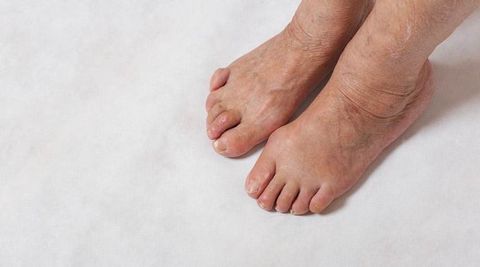Contact Us:
For Epping Clinic, call:
01992 570 003
For Hertford Clinic, call:
01992 504 814 or 01992 570 003
Email: info@premierfootclinic.co.uk
Foot Deformities
Experts in Foot Deformities
Visit our clinic to discuss how best to manage your painful foot issues.
Foot Deformities
Foot deformities can affect the foot as a whole but be more localised to a certain area or the toes.
Claw toe:
Claw toes are ones which begin to turn downward, resembling a bird's claw. This typically occurs on the smaller toes, not the larger ones. Claw toes can become a permanent condition if left untreated.
Hammer toe(s):
When you wear tight, uncomfortable shoes too often, this can cause the toes to become permanently bent, or "propped" up at the joint. This condition is called a hammer toe.
Mallet toes: The opposite of hammer toes. Here, the toes dip downward at the joint, causing great discomfort when wearing shoes.
Tarsal coalition:
When a child is still growing, some of their toes can fuse together, especially at the upper part of the toe, where the toe joins the rest of the foot.
This condition needs to be addressed immediately to ensure the child is not permanently affected
Bunions:
Picture a woman wearing shoes very pinched at the toe and how it would push the big toe inward:
Eventually, what happens in both men and women who wear cramped-box shoes is that as the top of the toe moves in and the joint at the base of the toe protrudes outward, causing pain shoes wear against the protrusion. It can also throw off the gait and cause imbalance.
Foot deformities can also be more widespread, affecting the entire foot structure.
Clubfoot:
With a clubfoot, the muscles on one side of the foot are shorter than the other, causing the foot to turn sharply inward. This forces the person to walk on the outside of the foot. It must be treated when the child is an infant to prevent permanent deformity.
Flat feet (Pes planus):
A flat foot has no arch at all. A flat foot is the most common structural deformity of the foot. It can be a congenital or acquired condition.
Many people who carry very heavy weights or become obese can suffer from a flat foot from the pressure placed upon the arches. Injury to the posterior tibial tendon of the foot can also cause arches to fall and a flat foot condition to develop
Get Expert Advice
At Premier Foot Clinic, you can be sure to get expert advice on the right course of action for your deformity. It may be that your symptoms are caused by the deformity itself and a referral for surgery is appropriate. In some case the deformity can cause secondary problems which can include pain from corns, bursa or muscle strain.
Appropriate treatment using debridement, orthotics, acupuncture and exercises can be discussed.
Presence of foot deformities will often lead to problems in getting suitably fitting footwear. Our extensive knowledge on footwear stockists can be useful adjunct to treatment outcomes
For pain-free foot care treatments, contact the podiatrists and chiropodists at Premier Foot Clinic.

© 2024. The content on this website is owned by us and our licensors. Do not copy any content (including images) without our consent.


